Third Front aims to carve space for Dalits, OBCs, and minorities ahead of November polls
Patna, October 17, 2025 — As alliances jostle for Bihar’s electoral arithmetic, All India Majlis-e-Ittehadul Muslimeen (AIMIM) chief Asaduddin Owaisi unveiled a new political formation — the Grand Democratic Alliance (GDA) — alongside Chandrashekhar Azad’s Azad Samaj Party (ASP) and Swami Prasad Maurya’s Apna Janata Party (AJP).
The fledgling coalition, contesting 64 Assembly constituencies, seeks to craft a third pole between the ruling NDA and the opposition Mahagathbandhan, banking on disillusioned youth, marginalized communities, and regional undercurrents that continue to shape Bihar’s politics.
Seat-sharing within the GDA has been finalised at 35 for AIMIM, 25 for ASP, and 4 for AJP, covering districts across Seemanchal, Magadh, and Bhojpur regions. Leaders of the bloc claim their alliance is “not opportunistic, but ideological” — one that aims to rebuild representation for groups who feel sidelined by both major camps.
The alliance’s slogan, “Nayi Soch, Nayi Rajneeti” (New Thinking, New Politics), sets the tone for what its founders describe as a “grassroots corrective” to identity politics.
I. Political Context: A Battle Beyond Two Poles
For two decades, Bihar’s electoral landscape has revolved around two dominant coalitions — the NDA, anchored by the BJP and JD(U), and the Mahagathbandhan, led by the RJD and Congress. Smaller parties often oscillate between the two, occasionally fielding symbolic independents.
AIMIM’s move to formalize a multi-party third bloc signals a renewed attempt to alter that binary. Political observers say the strategy mirrors the UP model of 2022, where micro-alliances among Dalit and Muslim-centric parties briefly shifted margins in select seats.
Why Now?
Discontent over unemployment, the Agniveer recruitment scheme, and agrarian stress have made Bihar’s youth restless. Both major alliances face fatigue in voter appeal. The GDA seeks to exploit that vacuum, positioning itself as a “voice for the voiceless.”
“We are not fighting for chairs. We are fighting to give dignity to every worker, farmer, Dalit and minority citizen of Bihar,” Owaisi declared at Patna’s Gandhi Maidan, as party flags of green, blue, and saffron fluttered side by side.
II. Anatomy of the Grand Democratic Alliance
Seat Distribution
| Party | Seats Contested | Core Region | Voter Base |
| AIMIM | 35 | Seemanchal (Kishanganj, Araria, Purnea, Katihar) | Muslim, lower-income, small traders |
| Azad Samaj Party (ASP) | 25 | Magadh, Bhojpur, Patna outskirts | Dalit, Ambedkarite youth |
| Apna Janata Party (AJP) | 4 | Central Bihar (Gaya, Nalanda) | Maurya-OBC clusters |
AIMIM will spearhead campaign logistics, while ASP handles candidate selection transparency and digital outreach. AJP’s inclusion provides a symbolic OBC anchor to the coalition.
Symbol & Slogan
The bloc will use the lantern-with-star symbol, merging AIMIM’s historic iconography with ASP’s blue motif, reflecting unity across faith and caste lines.
Slogan: “Rozgar, Samman, Suraksha — GDA ka Vada” (Employment, Dignity, Safety — GDA’s Promise).
III. Leadership & Messaging
- Asaduddin Owaisi (AIMIM) — Chief strategist, national face, responsible for Muslim outreach and media narrative.
- Chandrashekhar Azad (ASP) — Firebrand Dalit leader, symbol of youth defiance; handles student, Ambedkarite, and grassroots mobilisation.
- Swami Prasad Maurya (AJP) — Former UP minister, now Bihar campaign convener; aims to connect non-Yadav OBC and artisan communities.
Ideological Spine
At the launch, Owaisi stressed the need for “constitutional unity of oppressed voices”, asserting that mainstream parties “remember the poor only in slogans, not in policies.”
Azad echoed,
“Our alliance stands for reservation, education, and representation. We will not let social justice remain a photo-op.”
IV. Regions of Focus
1. Seemanchal Belt (AIMIM Stronghold)
Districts like Kishanganj, Araria, and Katihar have large Muslim populations and saw AIMIM breakthroughs in 2020. The party retains deep organizational roots through madrasa networks, youth wings, and women’s cells.
2. Magadh & Bhojpur (ASP Cadre Base)
Azad’s followers, mostly Dalit youth from Bihar’s central belt, run “Samta Yatras” across Gaya, Nawada, and Aurangabad. The region has symbolic resonance with the Ambedkarite movement.
3. Urban Fringe (AJP’s Trial Ground)
Maurya’s appeal among Maurya, Saini, and Kushwaha OBC groups could test how far the alliance’s “horizontal solidarity” stretches across caste boundaries.
V. Political Reactions
NDA Response
BJP spokesperson Arvind Kumar dismissed the GDA as “a recycled stunt to divide votes,” adding that Bihar voters “know who delivers development, not rhetoric.”
JD(U) insiders, however, acknowledge the potential vote-splitting impact in districts with thin margins. “If GDA grabs even 3–5% in Muslim-Dalit clusters, some seats could swing,” admitted a party strategist.
Mahagathbandhan View
RJD’s Tejashwi Yadav termed it “a spoiler alliance,” hinting that such fronts “weaken the secular vote.” Congress leaders privately fear a dent in their traditional minority pockets.
Yet, analysts suggest that younger voters, especially first-time voters in Bihar’s Tier-3 towns, might not align neatly along old caste arithmetic.
VI. Social Equations in Play
Bihar’s electorate has long been defined by caste loyalties:
- Yadavs + Muslims (MY) – Traditional RJD axis.
- Kurmi + Upper Castes + Non-Yadav OBCs – JD(U)-BJP bloc.
The GDA attempts to cross-pollinate Dalit and Muslim solidarities, reviving Ambedkarite-Islamic unity themes from the 1940s and 1970s student movements.
Youth Sentiment
Unemployment remains Bihar’s top issue. With lakhs of aspirants for limited government jobs, frustration runs deep. GDA’s campaign promises a “Rozgar Guarantee Yojana” focused on rural entrepreneurship and gig-economy regulation.
Women’s Outreach
AIMIM’s women’s wing, led by Sabahat Jamal, plans “Mahila Chaupal” gatherings across Purnea and Gaya to discuss healthcare, safety, and self-help group support.
VII. Challenges Ahead
1. Limited Organizational Depth
Outside Seemanchal, AIMIM and ASP lack booth-level networks. Mobilization in western Bihar will rely on volunteers rather than institutional machinery.
2. Perception Battle
The alliance risks being seen as “vote-splitter”, especially by anti-NDA voters. Convincing skeptics that GDA is a genuine alternative will test its narrative muscle.
3. Funding and Campaign Infrastructure
Unlike national parties, the GDA’s campaign budget is small. Digital strategies, crowd-funding, and ground volunteers are expected to fill the gap.
4. Leadership Coordination
Reconciling three strong personalities — Owaisi’s oratory, Azad’s activism, and Maurya’s pragmatism — will require disciplined messaging.
VIII. Potential Impact: What’s at Stake
64 Seats as Swing Zone
The GDA’s influence could reshape contests in 15–20 close constituencies where past margins were under 3,000 votes. Districts like Araria, Kishanganj, Sitamarhi, Aurangabad, and Gaya may see three-cornered fights.
If the bloc wins even 6–8 seats, it could emerge as a kingmaker in a fractured verdict scenario.
Political scientist Dr. Nirmala Pandey notes:
“Third fronts in Bihar rarely win big, but they often decide who doesn’t win. The GDA’s traction will be measured less by seats and more by its narrative disruption.”
IX. Ground Mobilization Plans
- Digital Campaigns – Social media teams aim to reach youth via short video explainers on jobs, caste equity, and price rise.
- ‘Nyay Yatras’ (Justice Marches) – ASP’s trademark marches will traverse 20 districts, focusing on land rights and SC/ST welfare lapses.
- Minority Outreach – AIMIM imams and clerics will spread messages during Friday prayers on “constitutional participation.”
- Youth Convention – Patna’s Gandhi Maidan rally on Oct 28 will host a 50,000-strong student convention.
X. Election Commission Watch
The Election Commission (ECI) has cautioned against hate speech and misinformation, urging all parties to submit model-code compliance affidavits. AIMIM and ASP have jointly requested equal airtime on Doordarshan and All India Radio for manifesto addresses.
Candidate declarations, assets, and criminal records will be uploaded by Oct 22. Independent observers are likely to monitor Seemanchal closely, given its past communal sensitivities.
XI. Bihar’s Third Front Experiments: Historical Lens
Bihar has witnessed several third-front experiments — from George Fernandes’ Samata Party in the 1990s to Upendra Kushwaha’s RLSP in the 2010s. Few sustained momentum post-election.
What sets the GDA apart, analysts argue, is its intersectional pitch — not merely caste arithmetic but “dignity politics.” By merging Ambedkarite and minority narratives, it appeals to cross-sections historically treated as separate vote banks.
Still, Bihar’s first-past-the-post system punishes fragmentation. Without regional alliances in north Bihar or parts of Mithilanchal, GDA risks underperforming in seat share even if it captures significant vote percentage.
XII. What Each Ally Gains
- AIMIM: Legitimacy beyond Seemanchal and a counter to its “communal party” tag.
- ASP: A new electoral playground after Uttar Pradesh stagnation.
- AJP: Visibility and a bargaining chip for future coalition politics.
For all three, 2025 is less an election than a long-term investment — building cadres, testing message resonance, and setting ground for Lok Sabha 2029.
XIII. The Road to November
Bihar’s two-phase Assembly elections — November 6 and 11 — will test whether voter fatigue with familiar power blocs can translate into votes for an untested front.
Campaigns have begun across campuses and markets. Volunteers distribute leaflets reading “Vote for dignity, not dynasty.”
The GDA’s manifesto, to be released Oct 24, is expected to include:
- Universal Employment Guarantee up to age 30
- Free coaching for civil-service aspirants
- Rural industrial clusters
- Caste census implementation
- Police reform and local governance empowerment
XIV. Voices from the Ground
In Araria’s Jokihat, Rashida Begum, a schoolteacher, says:
“People are tired of choosing between two alliances. Maybe this time we try something new.”
But in Nawada, shopkeeper Mukesh Paswan is skeptical:
“New fronts come and go. Real change comes only when someone stays long enough to deliver.”
These conflicting sentiments encapsulate Bihar’s political fatigue — hopeful yet wary, restless yet cautious.
XV. Conclusion: Experiment in Representation
Whether the Grand Democratic Alliance becomes a pivot or a footnote will depend not only on vote tallies but on its ability to articulate issues beyond slogans. Bihar’s politics has long thrived on identity arithmetic; the GDA aspires to rewrite it into coalition of purpose.
Its emergence may or may not alter power equations immediately, but it undeniably widens the conversation — forcing larger parties to confront voices they often sideline.
For now, Bihar’s November contest just got a third dimension — and possibly, a new vocabulary of assertion.
#BiharElections #AIMIM #GDA #Politics #Elections2025 #SeatSharing #DalitPolitics #MinorityVoice #BiharNews #ThirdFront



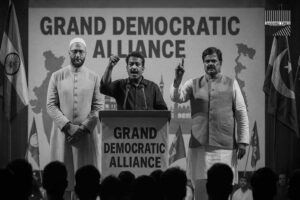







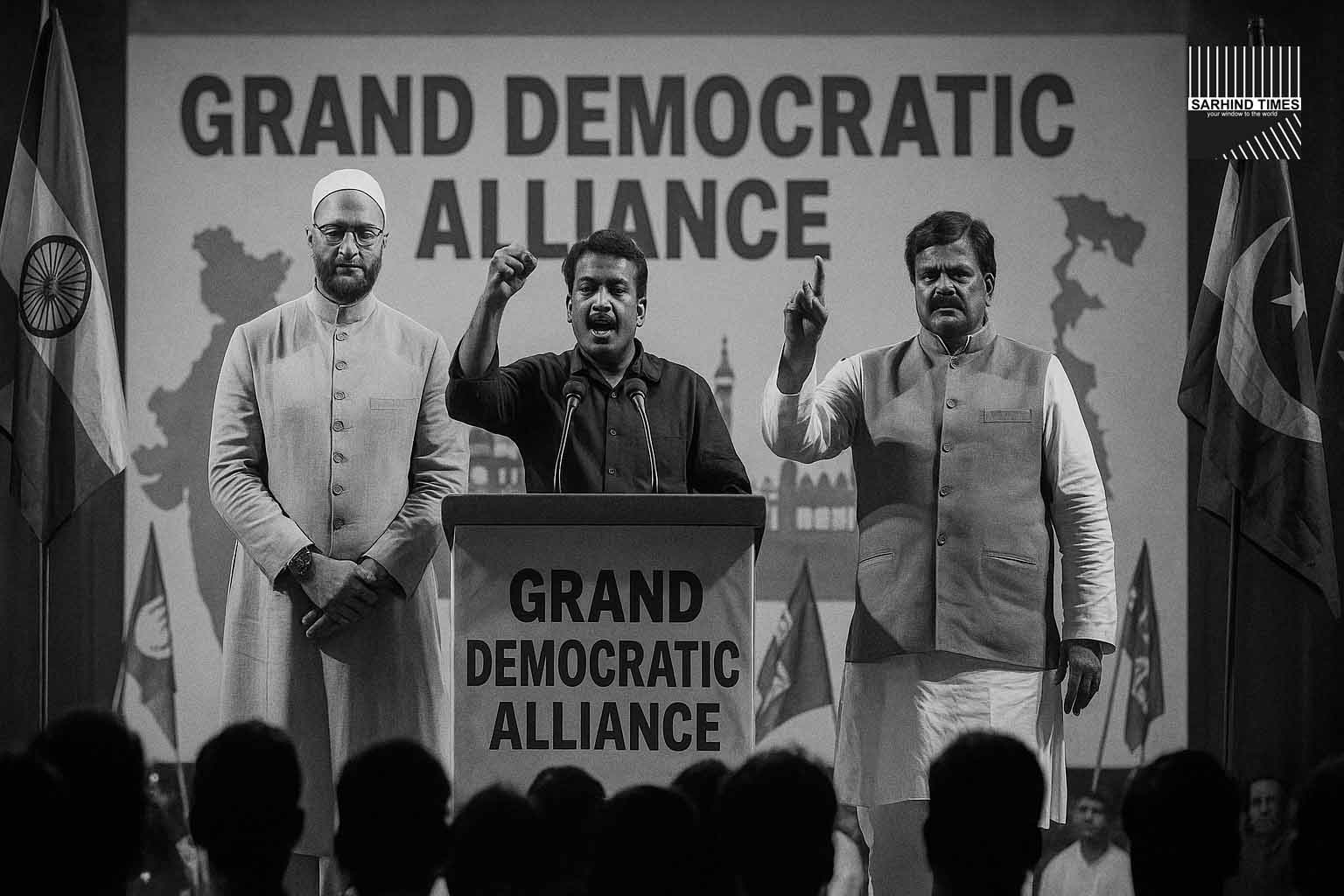
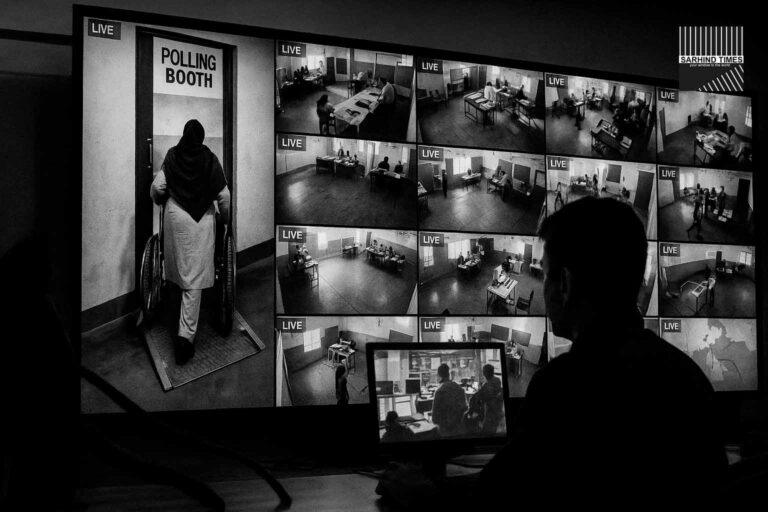
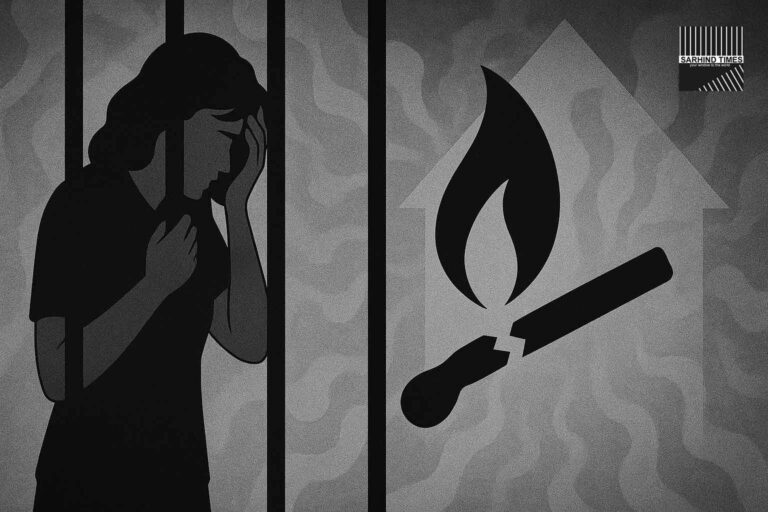
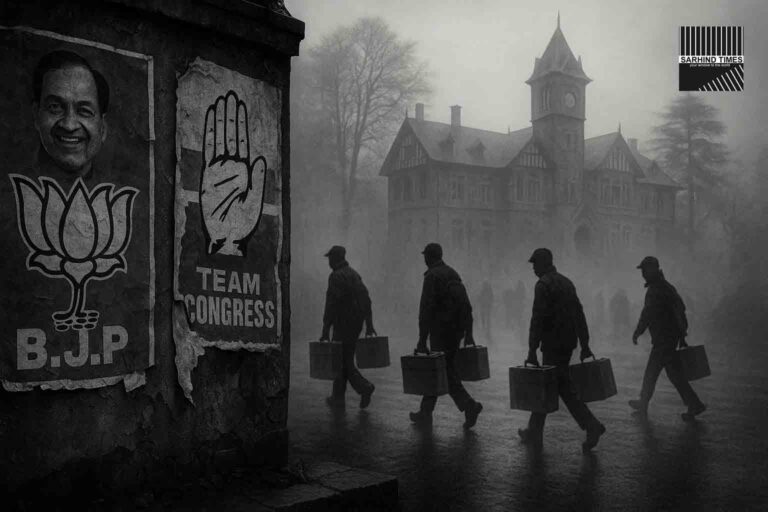
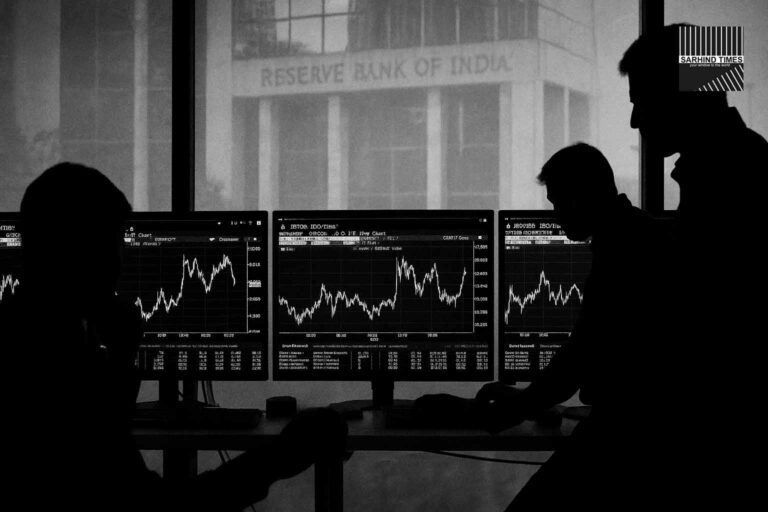
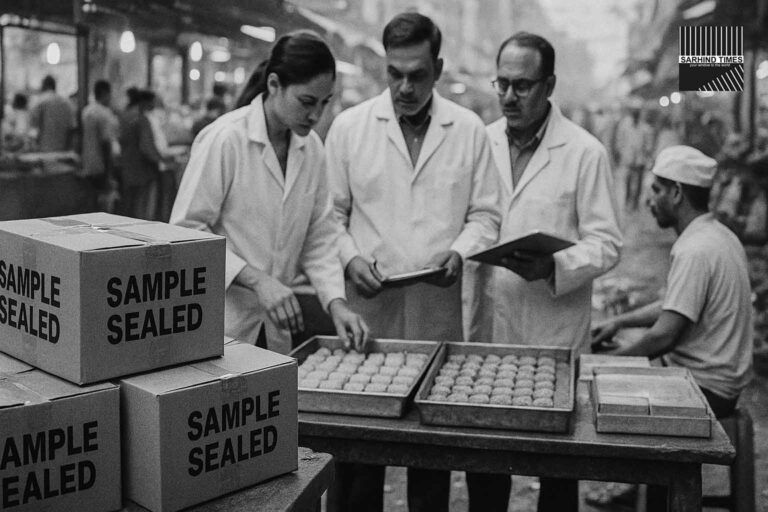
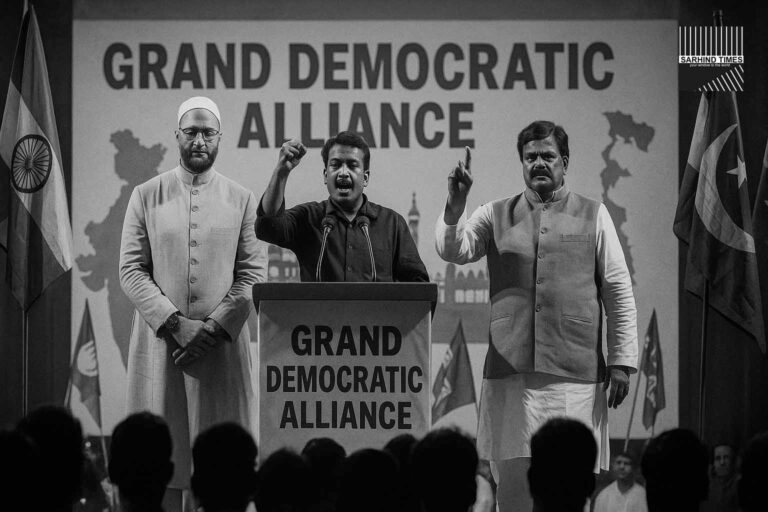

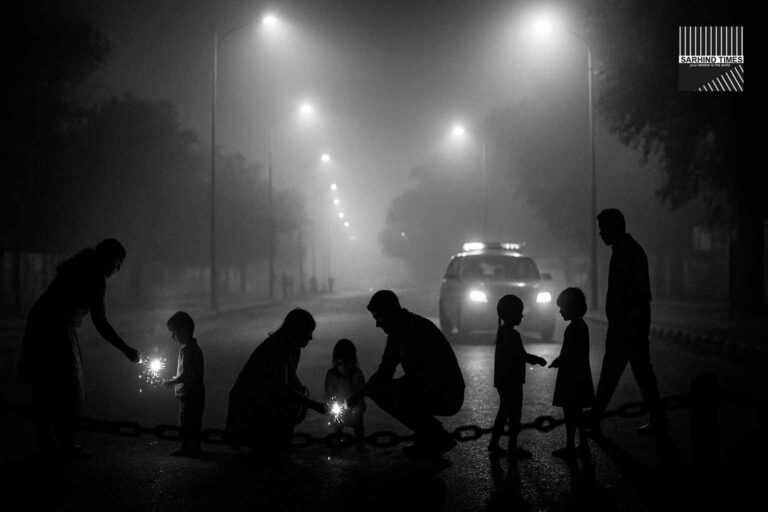
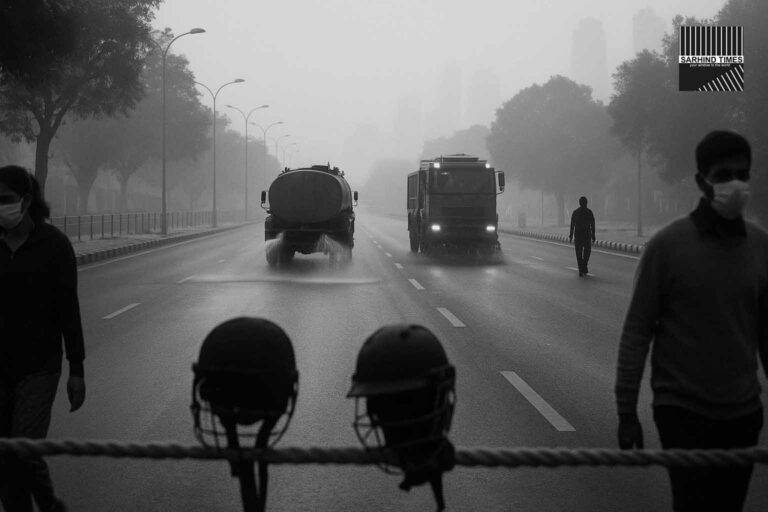
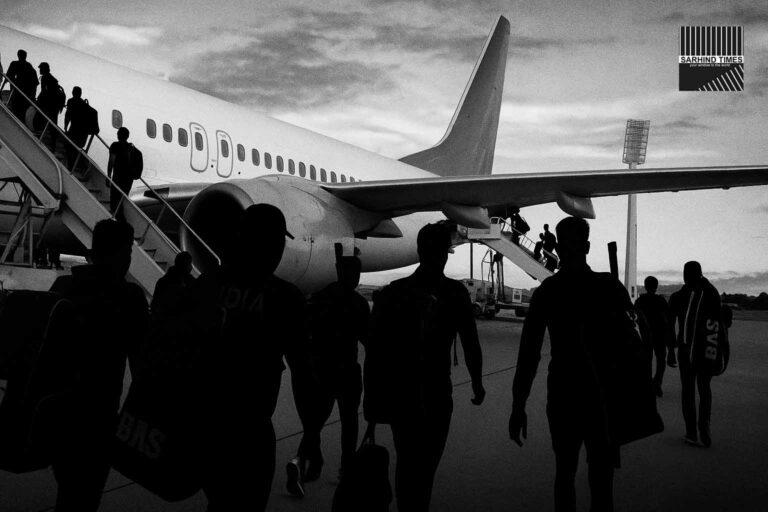
+ There are no comments
Add yours